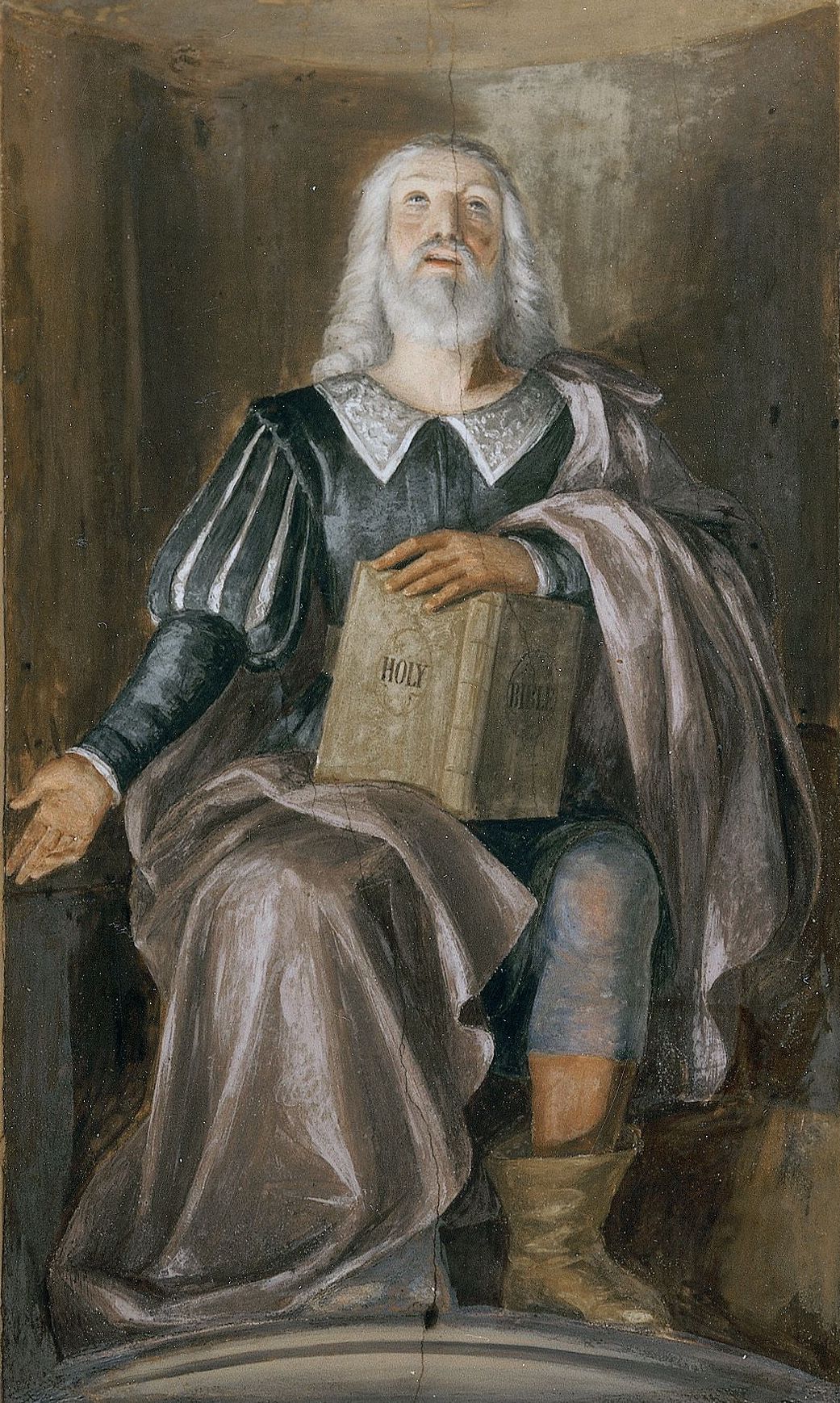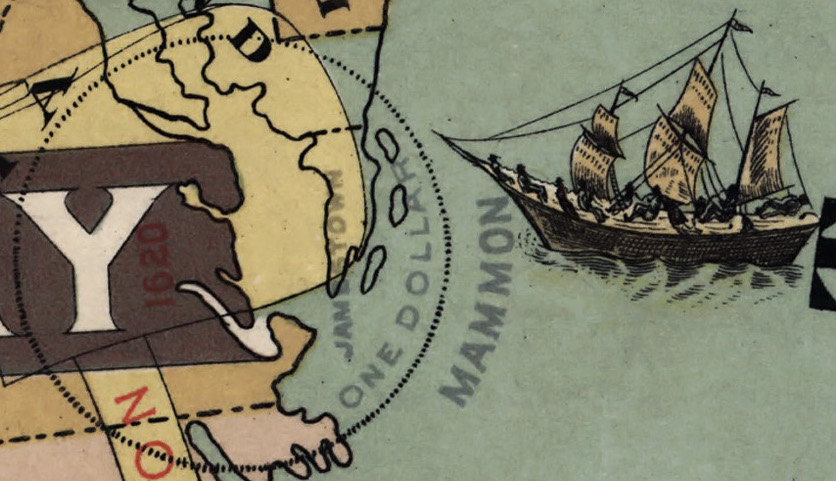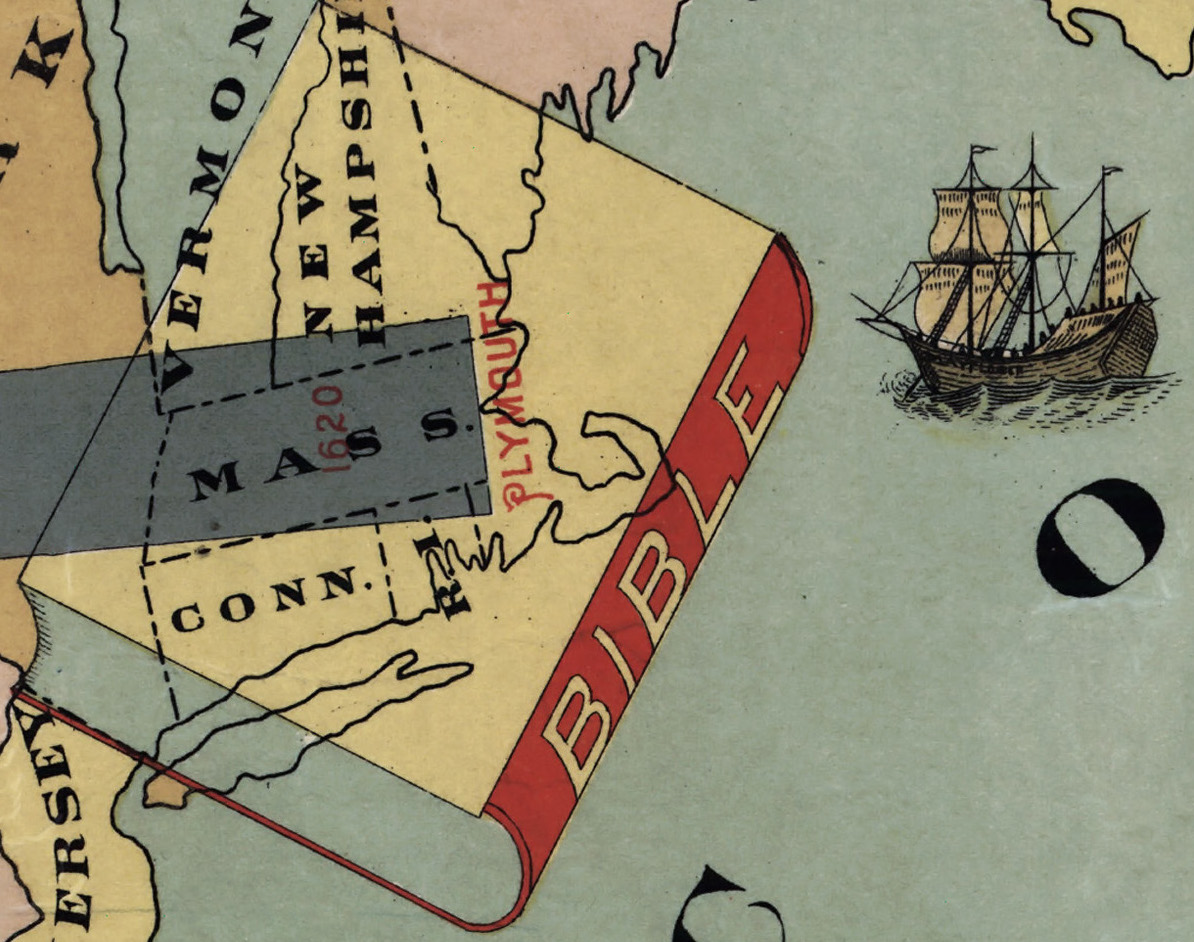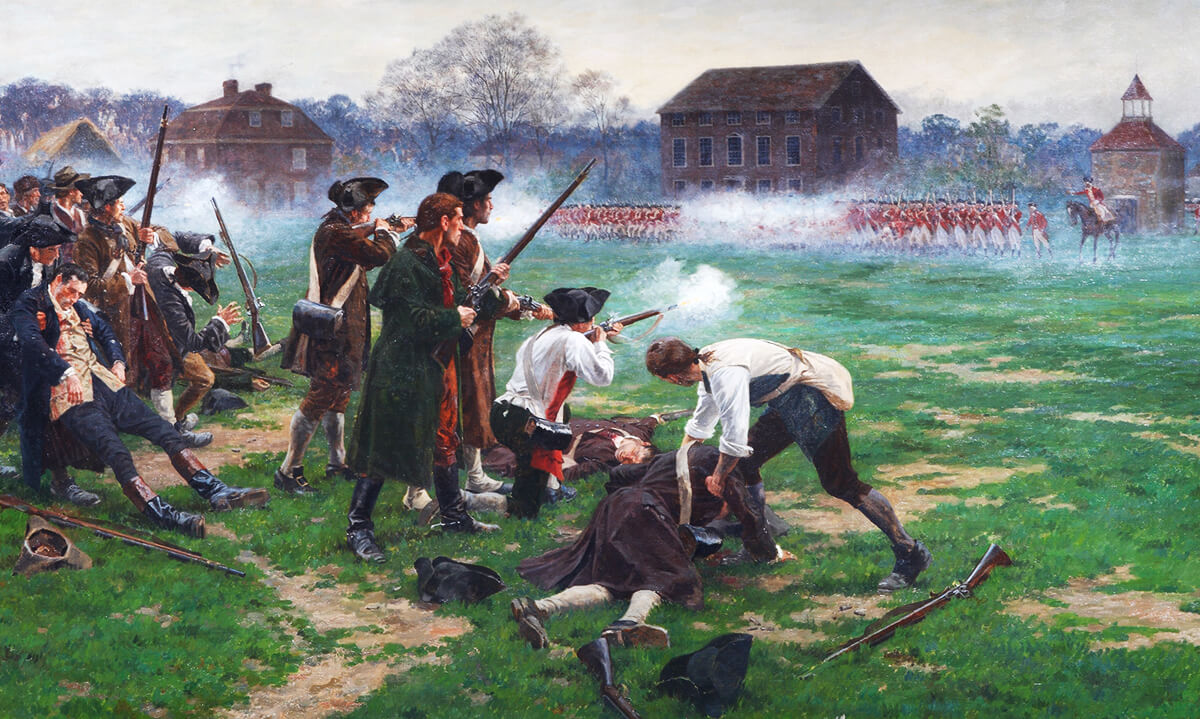The Pilgrims

By the time it’s all said and done, very few years have been as momentous as 2020. Between pandemics, riots, elections, it might be easy to forget the path that has led America to this position. But, 2020 was also the 400th anniversary of the Pilgrims landing upon our shores.
These religious dissidents hardly seem the heroes of an epic stretching across centuries, thousands of miles, and millions of people. However, it is no exaggeration to say that their courageous voyage fundamentally altered the direction of the world. The diminutive beginnings at Plymouth Rock represent the proverbial mustard seed that would eventually grow into a mighty tree of liberty.
The Pilgrim story is one of faith through hardship, and endurance through persecution. They were the first to risk their “lives, fortunes, and sacred honor” for the establishment of freedom on American shores.1 Due to their religious beliefs differing from the state-mandated doctrines set by the King, they were persecuted and oppressed. William Bradford, the future governor of Plymouth, explained how, “some were taken and clapped up in prison, others had their houses beset and watched night and day, and hardly escaped their hands.”2
Persecution

After years of harassment, this congregation of pious dissenters was eventually chased out of England by King James in 1607. They fleed to the city of Leiden, Holland for twelve years. Even though they no longer lived in England they still felt called to minister to their countrymen. So Pilgrim leader William Brewster began clandestinely printing religious books which would then be smuggled back into England. Needless to say, their contraband writing and “illegal” speech infuriated the King and officials in the Church of England. Although in a different country, they still were not free from the King of England’s reach. He sent out agents to uncover who was responsible for these “dangerous” opinions.3
Upon discovering the press of William Brewster in Leiden, James pressured the authorities to crack down on the Pilgrim enclave. Seeing the precariousness of their situation, the Pilgrims sent a delegation to England. They proposed a compromise in which they would travel to America in exchange for their religious freedom. Miraculously they secured an agreement. Now, they would have a place to practice their beliefs without interference from the King. In return, they had to give fifty-percent of their earning to the crown.4
Travel to America
With this plan the Pilgrims had to chart a new course through dangerous waters. Some decided to stay behind and others could not come. Then one of their boats was unable to make the trip—possibly due to sabotage—so even more were kept from the pilgrimage. By the time the Mayflower carried its collection of Pilgrims and Strangers (the name given to the other colonists who weren’t a part of the dissenters) only 104 souls embarked from the shores of the Old World.5 As Alexis de Tocqueville described so well in his monumental work, Democracy in America, the Pilgrims sought, “a land so barbarous and so abandoned by the world that they might yet be permitted to live there in their manner and pray to God in freedom.”6
Over the next year, from the voyage to the First Thanksgiving, the Pilgrims suffered from innumerable hardships. They steadily lost many of the men, women, and children. When they eventually celebrated the first successful harvest with their Native allies the following year, hardly 50 Pilgrims had survived.7 The fact that any of them survived is remarkable, but when placed within context it becomes undeniably miraculous.
Native Americans
Prior to the discovery of the New World by Christopher Columbus the Native Americans largely lived in a state of nearly continual and bloody conflict. Tribe against tribe, nation against nation, the Indians waged war over resources, land, and honor. Cannibalism, slavery, and human sacrifice were unfortunately common.8 Agricultural learning was still in its early stages of development. Their technology was centuries behind Europe when the two civilizations met. Indeed, the natives lacked items such as gunpowder, ocean-fairing vessels, or even wheeled transportation. There was no such thing as the peaceful and tranquil “noble savage.” The Native Americans were very much people—undeniably flawed, and in every way in as much need of the redeeming sacrifice of Christ as everyone else.
Pilgrims Vision

It was on this land that the hardy Pilgrims—outcasts from their homeland and fugitives from tyrants—set their hopes. Their vision was twofold. On the one hand they hoped to carve out a home for themselves and their children where they could worship God in their own way instead of having their religious beliefs dictated to them by the King. On the other hand, the Pilgrims sincerely wished to bring the hope of Christianity to the native people.9 The Mayflower Compact explained that all that they had sacrificed, all they had suffered, and all they had risked was for “the glory of God, and advancement of the Christian faith.”10
Pilgrims Actions
These goals caused the Pilgrims to make many developments and advancements in the fields of government, education, religious freedom, human rights, and political liberty. When it came to relations with the surrounding Native American tribes, the Pilgrim’s Christian foundation enabled them to forge the longest lasting peace treaty in early American history and successfully begin evangelism efforts.11 Taking the Bible as the guide book to every major facet of life—a map to creation authored by the Creator—the Pilgrims instituted the free market, the institutional independence of the church from the dictates of the government, stronger protections for private property, and public education.12 In 1641 they also passed possibly the first anti-slavery law on the continent making “man-stealing” a capital offence.13
In fact, when a slave ship came to them in 1646, the Pilgrims prosecuted the slavers and liberated the slaves.14 Although far from perfect—for all have fallen short and sinned (see Romans 3:23)—those early beginnings of anti-slavery sentiment eventually led to the New England area being the first places in the modern world to abolish slavery, with Massachusetts specifically ending the institution in 1783—a full 50 years before England, which was the first independent nation to abolish slavery.15
Jamestown
However, the Pilgrims were not the only people to colonize the New World. As Tocqueville noted, America contains, “two principal offshoots that, up to the present, have grown without being entirely confused—one in the South, the other in the North.”16 In 1607 a group of merchants and traders had occupied land given to them in the New World by the King of England founding the colony of Jamestown, Virginia. Having different motivations, desires, and hopes, the colonists of Jamestown acted dramatically differently from the later Pilgrims.
Instead of coming for religious freedom, the Jamestown colonists largely came as agents of the King for the purpose of economic profit and trade. Thus, slavery was introduced early into Jamestown and protected by their legal codes. Their relations with the native tribes was markedly more contentious, tragic, and warlike. The lack of a Biblical structure and spiritual motivations created a vastly different environment.
Pilgrims vs Jamestown: The Fruits
These two seeds sprouted two rival trees which both sought to dominate the fertile land that eventually became the United States. From Jamestown the crooked and perverse Tree of Slavery began to creep across the young country. Plymouth, however, a different sort of plant took root. Based upon their dedication to the Bible, the Tree of Liberty first budded in the fields plowed by the Pilgrims. As the Scriptures say, “a tree is known by its fruit,” (Matthew 12:33), and the product of Jamestown and Plymouth differ drastically from one another.
 This map from 1888 perfectly illustrates this duality in the American identity—a tale of two cities. The map was created only a generation after the Civil War, which itself was but the cataclysmic struggle between the heirs of the differing philosophies of Jamestown and Plymouth. Designed to teach their children about the history behind the war, it traces the heritage for the South back to Jamestown and the North to Plymouth. Going further, the map highlights the fundamental difference between purpose of founding each colony. While Jamestown was established for mammon [worldly riches], Plymouth was planted upon the Bible.
This map from 1888 perfectly illustrates this duality in the American identity—a tale of two cities. The map was created only a generation after the Civil War, which itself was but the cataclysmic struggle between the heirs of the differing philosophies of Jamestown and Plymouth. Designed to teach their children about the history behind the war, it traces the heritage for the South back to Jamestown and the North to Plymouth. Going further, the map highlights the fundamental difference between purpose of founding each colony. While Jamestown was established for mammon [worldly riches], Plymouth was planted upon the Bible.
Slavery

From these two very different places, two trees sprouted and stretched across the country. From Jamestown grew the Tree of Slavery, whose poisoned branches produce pain, suffering, and evil. The fruit of slavery include: avarice, lust, ignorance, superstition, sedition, secession, treason, and rebellion. All who eat from this tree unrepentant are warned that their ultimate destination will surely be Hell.
The other seed, the one planted in Plymouth, leads to a much different kind of banquet. The Tree of Liberty produces: free schools, intelligence, knowledge, obedience to law, free speech, equal rights, contentment, love of country, industry, philanthropy, sobriety, benevolence, morality, happiness, justice, patience, virtue, charity, truth, faith, honor, hope, peace, joy, and light. Eventually take those who partake of this tree will at least have the taste of immortality, for such things all sprout from the fountainhead of Christ.
The Problem

Today Americans find themselves upon a ship beset and besieged on all sides by turbulent storms and crashing waves. The ones who built this boat, the Founding Fathers, made it sturdy and with great wisdom, but it is up to us to decide where we will put ashore—and into which city will we disembark. Will it be Jamestown or Plymouth? Which tree will we take the fruit from?
There are many today who mistake the Tree of Slavery for one of security. There are serpents which crawl around deceiving many with high sounding nonsense. “Surely you will not die!” (Genesis 3:4). But death will be the least of our concerns if we chose that path. The sad and tragic histories of Germany, Russia, Venezuela, and more bear ample witness to what happens when nations eat of the fruit of slavery and oppression. We must not be similarly deceived.
The Solution
We must once again set a course towards the Tree of Liberty. It is undoubtedly the more difficult of the two paths. The voyage to this New Plymouth may be dangerous, we may be beset by innumerable hardships, and there is no guarantee that we all will make it through that first perilous winter—but freedom is irreplaceable. It is only in a state of liberty that humanity can make good the assertion that “all men are created equal and endowed by their Creator with certain inalienable rights.”17
On the 400th Anniversary of our Pilgrim forefathers planting this small seed of freedom in a world of tyranny and oppression, let us “combine and covenant ourselves together”18 once again in order to turn their tree into an orchard so that all may partake in this feast of liberty. If we work diligently, the harvest will allow us to finally join together in a new day of genuine and heartfelt Thanksgiving just like those pious heroes did some four centuries ago.
Endnotes
1 “A Declaration by the Representatives of the United States of America,” 1776, The Constitutions of the Several States of America; The Declaration of Independence (Philadelphia: J. Stockdale, 1782), 5, here.
2 William Bradford, The History of Plymouth Plantation (Boston: Little, Brown and Company, 1856), 10.
3 Ashbel Steele, Chief of the Pilgrims: Or The Life and Time of William Brewster (Philadelphia: J. B. Lippincott and Co., 1857), 171-180, here.
4 William Bradford, The History of Plymouth Plantation (Boston: Little, Brown and Company, 1856), 46.
5 “List of Mayflower Passengers,” Society of Mayflower Descendants in the State of New York: Fourth Record Book (October 1912): 167-178, here.
6 Alexis de Tocqueville, trans. Harvey Mansfield, Democracy in America (Chicago: University of Chicago Press, 2000), 32.
7 Walter Wheeler, An Illustrated Guide to Historic Plymouth Massachusetts (Boston: The Union News Company, 1921), 57-58, here.
8 See, for example, Jonathan Richie, “Before the West was Won: Pre-Columbian Morality,” WallBuilders (October 12, 2019): here; Fernando Santos-Granero, Vital Enemies: Slavery, Predation, and the Amerindian Political Economy of Life (Austin: University of Texas Press, 2009), 226-227.
9 Joseph Banvard, Plymouth and the Pilgrims (Boston: Gould and Lincoln, 1851), 25.
10 Henry Dexter, editor, Mourt’s Relation; or Journal of the Pilgrims at Plymouth (Boston: John Kimball Wiggin, 1865), 6.
11 David Bushnell, “The Treatment of the Indians in Plymouth Colony,” The New England Quarterly 26, no. 2 (1953): 193-194, 207, here.
12 Cf., David Barton and Tim Barton, The American Story: The Beginnings (Aledo: WallBuilders Press, 2020), 79-80.
13 “The Body of Liberties of the Massachusetts Colony in New England,” 1641, Documents of the Constitution of England and America, from Magna Charta to the Federal Constitution of 1789, ed. Francis Bowen, (Cambridge: John Bartlett, 1854), 72.
The Body of Liberties also said: “There shall never be any bond-slavery, villeinage, or captivity amongst us, unless it be lawful captives taken in just wars, and such strangers as willingly sell themselves, or are sold to us. And these shall have all the liberties and Christian usages which the law of God established in Israel concerning such persons” (here). In most of world history, as in the time of ancient Israel, there were usually just two options for an enemy conquered in war: kill or enslave them.
The Bible gave explicit limitations to slave owners, such as if slaves escape, the owner is not to pursue them (Deuteronomy 23:15-16), or if the owner injures them, they are to be set free (Exodus 21:26-27), and other such requirements to which the Massachusetts code alludes. So while this Massachusetts code did permit some degree of slavery, it was much narrower than what was practiced in the world at that time or became common in the South. It was permitted only for “lawful captives taken in just wars” and “such strangers as willingly sell themselves, or are sold to us.” And since this same code banned “man-stealing,” no one could purchase slaves kidnapped from another country, as was typical with the African slave trade. “Villeinage” refers to the feudal practices of Europe by which land tenants became the slaves of the owner, which was banned by Massachusetts.”
14 Nathaniel Shurtleff, Records of the Governor and Company of the Massachusetts Bay in New England (Boston: William Whites, 1853), 2.168, 176.
15 For more see, Jonathan Richie, “America’s Exceptional History of Anti-Slavery,” WallBuilders (April 6, 2020): here.
16 Alexis de Tocqueville, trans. Harvey Mansfield, Democracy in America (Chicago: University of Chicago Press, 2000), 30.
17 “A Declaration by the Representatives of the United States of America,” 1776, The Constitutions of the Several States of America; The Declaration of Independence (Philadelphia: J. Stockdale, 1782), 1, here.
18 Henry Dexter, editor, Mourt’s Relation; or Journal of the Pilgrims at Plymouth (Boston: John Kimball Wiggin, 1865), 5-7.
Still looking for answers? Visit our FAQ page
More Resources
Know the Truth and Protect Your Freedoms.
Still looking for answers? Visit our FAQ page
Stay Informed with the Latest Resources
Enter your email address to receive our regular newsletter, with important information and updates right in your inbox!










